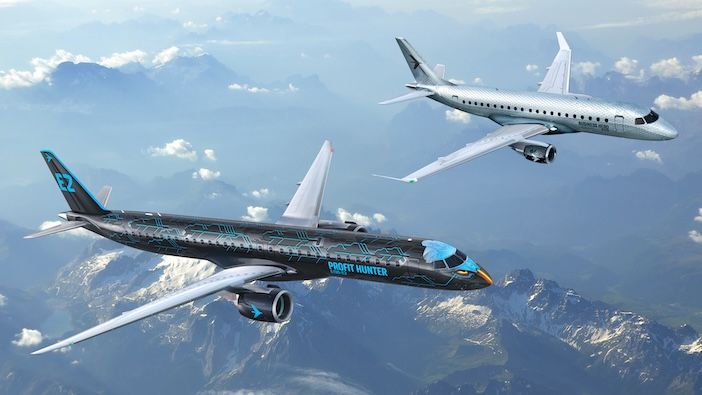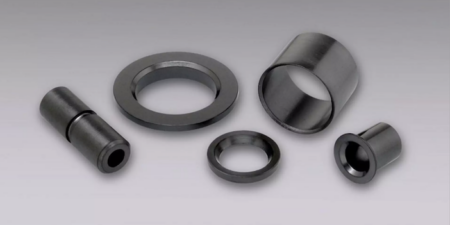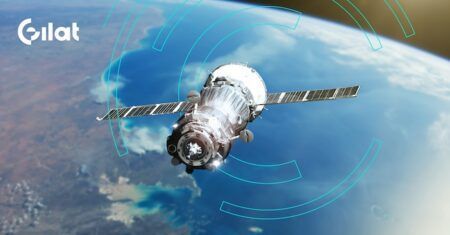Embraer is now offering a range of upgrades and performance improvements across its single-aisle commercial jet line up. The upgrades on the E195-E2, E190-E2, and E175, including cabin and passenger experience upgrades, fuel burn and range improvements, and avionics updates, are claimed to deliver a net present value of US$6 million per aircraft over 15 years in terms of cost reduction and additional revenue.
E2 features for the E175
E175 operators can select from a variety of cabin upgrades to bring the experience closer to that of the E2.
The E175’s overhead luggage bin capacity will double in size, with the ability to fit one bag ‘wheels first’ per customer as in the E2, to create a similar bin capacity to the E2
Cabin mood cabin lighting as seen on the E2 will also become available on the E175, as will new Recaro seats.
A big development is that satellite connectivity will soon be available for the first time on the E175, to meet a growing passenger expectation. Both Ku and Ka band satellite connectivity will be available for retrofit by 2026.
Data transfer solutions and the weather radar system on the E175 will also be upgraded to match the capabilities of the E2. This will enable digital transformation and wireless retrieval of flight data, and will be available by Q4 2024. The next-generation weather radar provides turbulence detection and alerts, predictive wind shear detection, and 3D volumetric scanning, and will be available by Q2 2026.
E2 improvements
The E2 itself has also received attention. A cabin optimisation programme has enabled Embraer to fit in an extra row of four seats to most configurations of the E195-E2. For example, an aircraft configured for 136 seats would now be able to seat 140 passengers. Maximum seating capacity remains at 146. Recaro seats will now also be an option for the E2.
According to Embraer figures, one extra row of seats can generate extra revenue for airlines equivalent to US$4.5 million per aircraft over a period of 15 years.
E2 operational efficiency upgrades
On entry into service Embraer found that the E2 was notably more fuel efficient than it had advertised. The reduced burn rates that airlines experienced in real-world operations have now been ratified, with Embraer claiming the E195-E2 is 12.5% more fuel efficient than the closest competitor aircraft, rather than the previously advertised 10%.
The fuel efficiency is also helped by an improvement to the bleed management system, which extracts less bleed, demanding less from the engine and therefore saving fuel. Embraer says the improvement is worth US $1 million per aircraft.
Meanwhile the range on the E195-E2 has been boosted from 2,600NM to 3,000NM. The new maximum take-off weight (MTOW) of 62,500kg was recently certified which, combined with the lower fuel burn, provides this range improvement.
Another development is that engine improvements on the E2s GTF engines will increase time on wing by 10%. This is achieved by optimising climb thrust, which demands less of the engine, therefore reducing engine degradation and increasing time on wing. Embraer expects this efficiency will save operators US$0.5 million over 15 years.
Embraer has also unveiled its E2 Enhanced Take Off System. This automatic take off system produces a more precise and efficient rotation moment and flight trajectory, reducing the required field length and pilot workload, enabling more payload and more range from challenging airports.
Embraer says the system gives the E2 best-in-class performance from airports like London City, Florence, and Santos Dumont. For example, 350NM in range can be added from London City.





